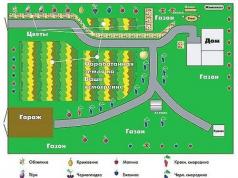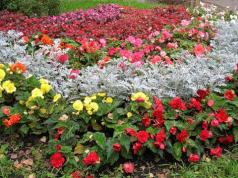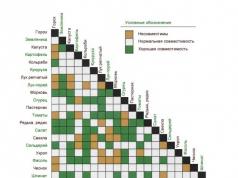Any summer resident is interested in why the leaves of tomatoes curl, the leaves may turn yellow at the same time. These tasty and healthy vegetables are susceptible to pests and diseases. To save plants, urgent and most effective measures should be taken.
The following reasons can be named, due to which the leaves of tomatoes are twisted:
- violation of the temperature regime;
- violation of the humidity regime;
- insect damage;
- defeat by bacterial diseases;
- nutrient imbalance;
- incorrect pinching and pinching;
- root damage.
What should summer residents do to grow a healthy plant? Let's take a closer look at each of the causes of leaf curl and how to eliminate them.
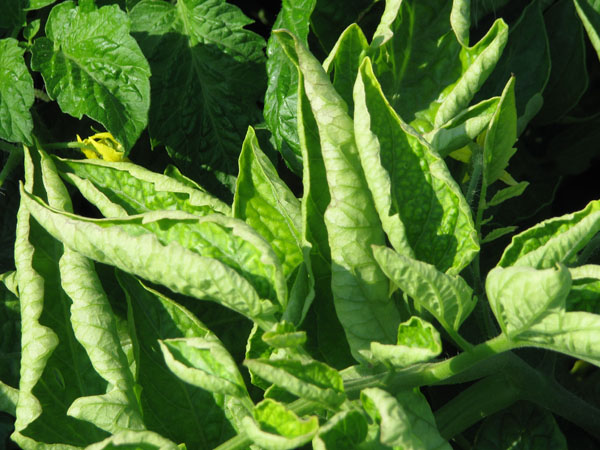
Violation of the temperature regime
By evening, the twisted leaves take on their normal shape and during the night receive the missing moisture from the dew, replenishing the balance. What to do if the weather is hot, dry for a long time and the leaves of tomatoes are twisted? The best way is to shade the plant, helping its foliage to avoid curling.You can throw the following materials on tomatoes during hot hours:
- covering spunbond;
- agrofibre;
- lutrasil.
It is not recommended to water the plant in the sun, because the leaves can get burned from droplets of water. A good way to deal with the described cause of twisting is to mulch the soil on the tomato beds. What to do if the plant is not comfortable enough? You can cool the roots with a few centimeters of cut grass.

Violation of the humidity regime
A common reason why tomato leaves curl is a small amount or an excess of moisture. Some summer residents do not treat watering with due attention, relying on the fact that rain compensates for the lack of moisture. Others do not water often enough or in small quantities. With a small amount of water, moisture penetrates only a few centimeters of soil, not reaching the roots located below.
Watering tomatoes is necessary 1 time in three days if the beds are not protected by grass, and 1 time in 7 days on mulched beds. There should be a bucket of water for each tomato bush. It is necessary to pour it out not at once entirely, but in portions, so that all the water penetrates for its intended purpose - to the rhizome.
The reason for twisting the leaves inward is also an excess of moisture. In case of excessive humidity, tomato leaves are wrapped up. The root system of plants can suffocate during prolonged heavy rains, especially if tomatoes grow in clay soil, where water does not go deep into the ground very quickly. If, during planting, the holes are filled with loose earth, this misfortune can be avoided. Grooves can be made to remove moisture from the roots.
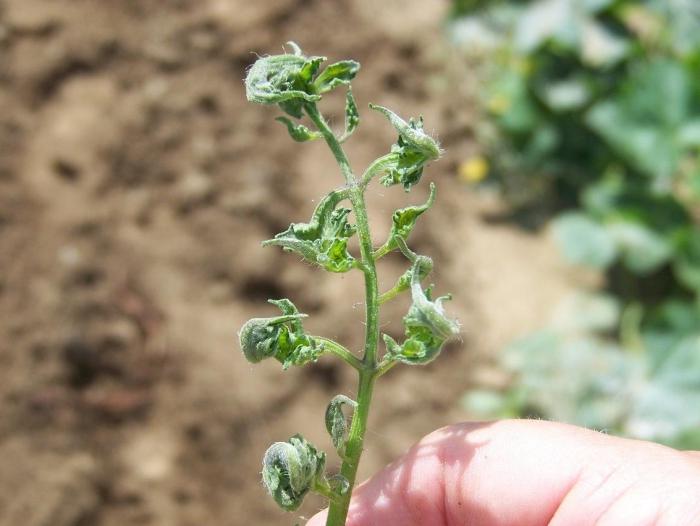
insect pests
The causes of leaf curl are supplemented by damage to tomato leaves by harmful insects (aphids, whiteflies) that suck their juices, which leads to leaf curl in a tomato. Tomato leaves will straighten if you start saving from pests in time. If the leaves turn yellow, spots and damage appear on them, you need to spray the foliage with ready-made preparations or use infusions of onion peel, celandine, wood ash.
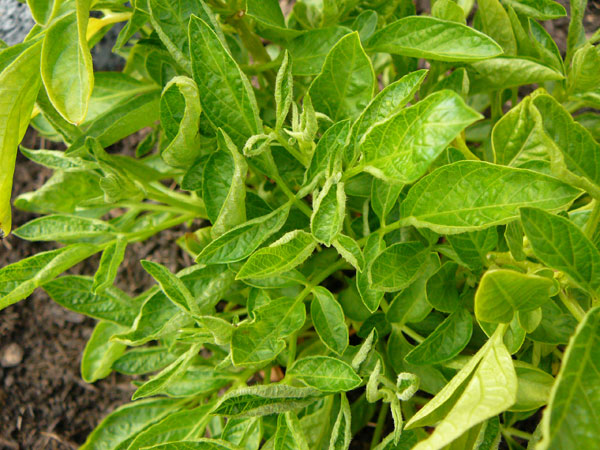
The use of chemicals when growing fruits appear is undesirable, since tomatoes tend to accumulate toxic substances.
If the leaves on the tomato are curled due to the presence of pests on them, you can use the following infusions:
- Infusion of wood ash. 2 tbsp. pour the ashes into a bucket of water, mix with 100 g of laundry soap and insist for a day. Then spray the tomatoes.
- Foliage will get rid of aphids decoction of onion peel, 200 g of which you need to pour a bucket of warm water and leave for 12-15 hours.
- During the flowering period of celandine, you need to take 4 kg of the plant and insist 2 days in a bucket of water. Such a drug is able to get rid of caterpillars, larvae, aphids.
Cultural diseases
There are more than 20 types of pathogens of bacteriosis. Bacterial cancer has become widespread, causing wilting of shoots, yellowing of foliage along the edge, and its twisting. The fruits are covered with spots - first white, then yellowish. The plant dies on average 2 months after infection. During periods of prolonged rains, cancer spreads extremely widely, since humidity above 80% favors its development.The leaves on the tomato are also curled due to such a disease affecting young plants as black spot, transmitted by seeds. When affected by spotting, dark spots appear on the fruits, later you can see that many leaves have curled up and dried up.
Bacterial cancer and black spot are not the only diseases. The reason is a little less common, but fatal - bacterial spotting (mottling). At low temperatures and high humidity in early spring, planting tomatoes is especially dangerous due to the likelihood of infection with this bacterial disease. During its course, the leaves twist, the flowers dry up and fall off.
Plants can be protected by the following measures:
- use of bacterial resistant varieties;
- timely control of weeds, the seeds of which can carry the infection;
- systematic removal of affected fruits;
- careful removal from the soil surface before planting seedlings of plant debris;
- disinfection of beds with a solution of potassium permanganate, which destroys bacteria that kill tomatoes.
Bacterial causes of leaf curl are serious, it is difficult to cure tomato fruits. If a solution of potassium permanganate (you can mix it with a solution of urea) does not give a positive result, the infected plants will have to be destroyed.
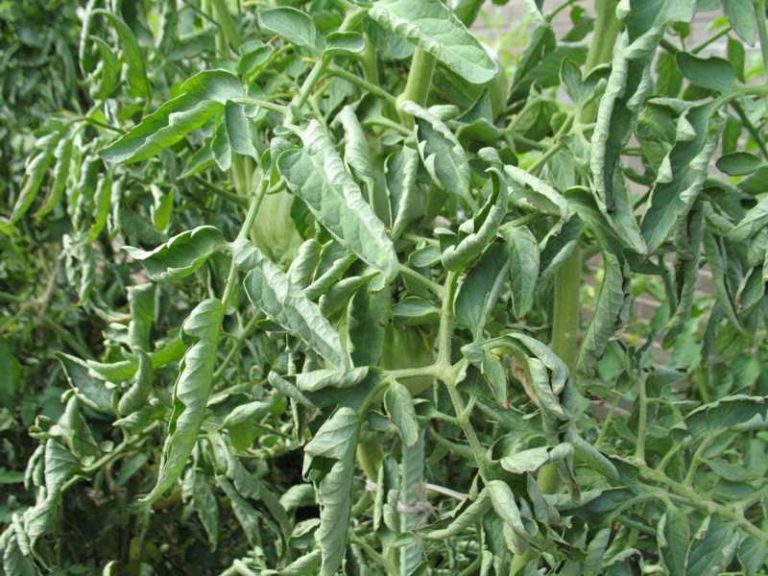
Deficiency or excess of fertilizers
Why do tomatoes curl leaves if all the conditions for favorable growth are met?
- Tomatoes may be short drain nutrients.
- The green color is lost, the growth of the plant is stunted, the foliage curls up - these are signs of nitrogen starvation.
- If the leaves turn grayish in color, become wrinkled, yellowish and brittle, there is a potassium deficiency.
- With calcium deficiency, the lower leaves turn pale, if there is not enough boron, the stem turns black.
- There may be a lack of magnesium, manganese, copper, which has a depressing effect on tomatoes. Flowers do not form on them, necrosis develops on the leaves.
It is preferable to carry out foliar top dressing, which consists in spraying with nutrient solutions. It is important to observe the permissible concentration of the solution. For top dressing, saltpeter, boric acid, solutions of manganese, zinc, copper sulfate, and ash are used.
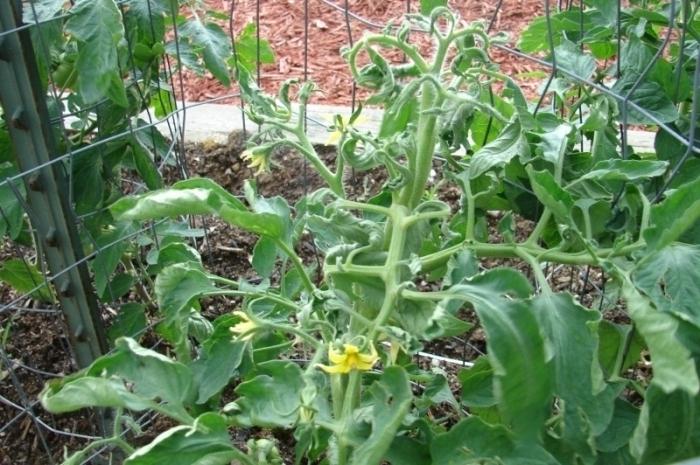
Why do leaves on tomatoes curl if there is enough top dressing? Too much fertilizer can also cause leaves to curl in an attempt to reduce photosynthesis. Chemical fumes can burn the foliage and stems of tomatoes. To reduce the concentration of fertilizers, you need to water the plants abundantly, washing the top layer of soil. It is necessary to ensure that the water does not stagnate at the base of the bushes, otherwise the tomatoes will suffer from an excess of moisture.
Mistake pinching
Tomatoes are very demanding plants and can be stunted and spoil even if none of these causes are present.
The reason may be in their incorrect pinching or pinching.
The process consists in pruning individual branches and removing stepchildren. In this case, care must be taken, because if you cut more than 2 leaves per week, the rest may begin to curl, since the mass cutting of an excessive number of branches and leaves upsets the balance between the rhizome and the outer part of the tomato. Also, too early, less than 3 weeks after planting, pinching and pinching plants can do harm.
You can only get rid of stepsons that have reached 7-8 cm, not forgetting to leave a stump about 1 cm long at the base of the stem. This is a guarantee that the shoot will no longer grow at this place. If you systematically remove all stepchildren, you get a bush of 1 stem.
You can strengthen the power of the root system of a tomato by laying its individual shoots in the grooves and burying them there so that only the tops remain above the surface.
Why do tomato leaves curl (video)
Root system damage
During the transplantation of tomato seedlings from pots to the garden, it happens that due to negligence, certain parts of the plant's roots turn out to be damaged. Why do tomatoes turn yellow and curl because of this? While the damaged areas of the root are being regenerated, the tomato does not receive proper nutrition, so the consequences are the same as when the plants are starving. Over time, the rhizome is restored, the plant takes root, and the twisting of the leaves stops.
It is important to know that some varieties of tomatoes have a characteristic feature - their leaves do not spin due to diseases or adverse conditions, but are wrapped by nature. Among them are such varieties as Honey Drop, Fatima, cherry tomatoes.

